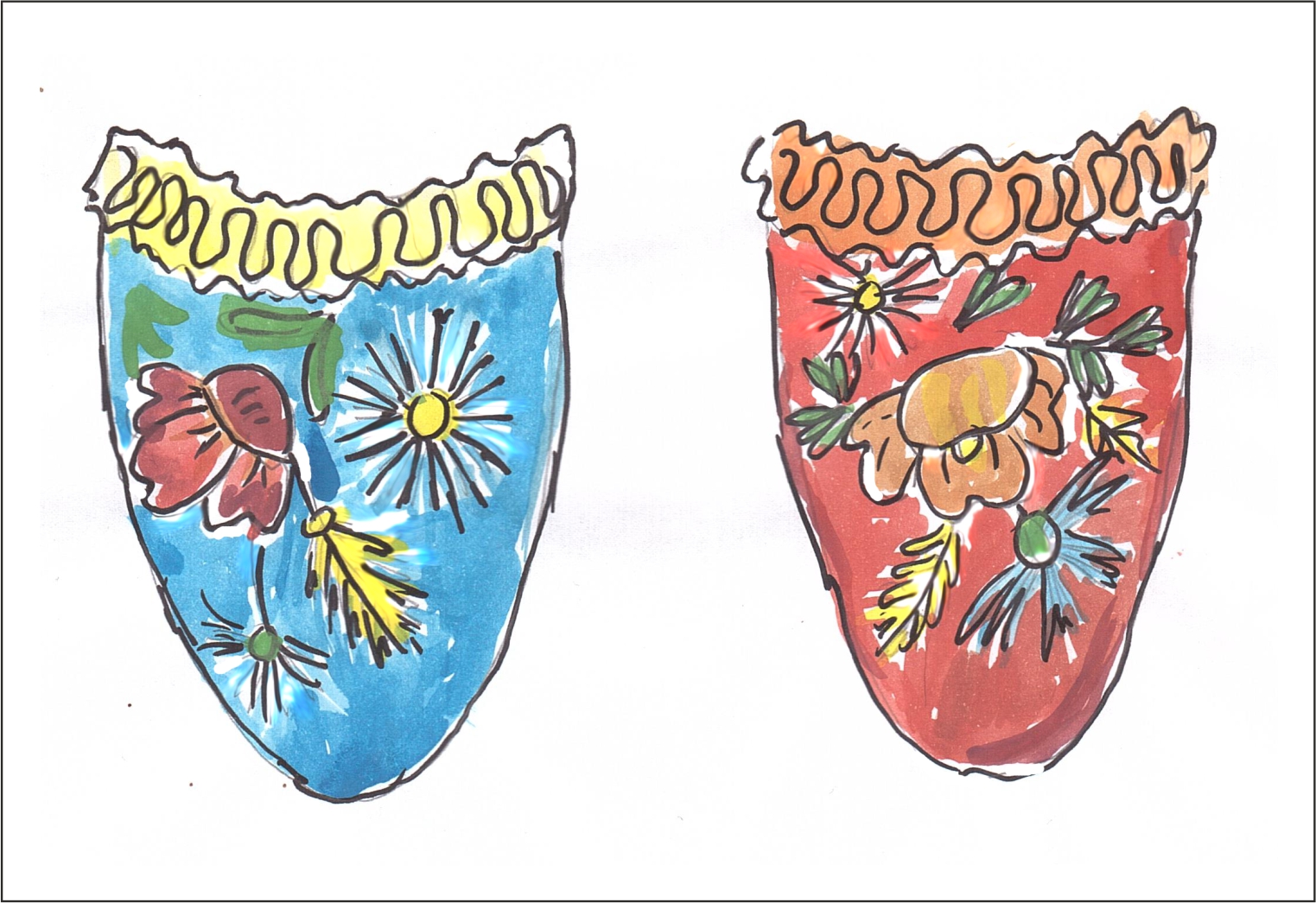
Did you know?
Making and wearing Szeged slippers are closely connected to the history of Szeged. Szeged slippers were the most relevant footwear among local people in the 19-20th centuries. Nowadays, you can buy them just as a souvenir. They became one of the symbols of Szeged. Their production preserves more centuries-old traditions. You can read more about their history if you click on.
Sándor Rátkai expressed his opinion about Szeged slippers:
“What makes Szeged slippers to the speciality of Szeged? First of all, the embroidery does. Wild flowers, poppies, forget-me-nots and spikes decorate slippers. When I was an apprentice, there weren’t slippers like this, they were made from simple velvet without any embroidery. Embroidered slippers came into fashion later, when they started to make tasselled, ribboned slippers for also right and left foot. Before that, there weren’t any differences between the right and the left pair. That’s why it is said Szeged slippers haven’t got a pair.”
Story of Szeged slippers
Szeged slippers became well-known all over the country in the first half of the 20th century. The method of their making and its fashion derive from the Turkish occupancy of Hungary. The technique of their making is tried to be preserved for the posterity.
In the 16-17th centuries, making and wearing slippers became fashionable in more areas of Hungary. The footwear which were made by the masters in Szeged were really popular in the Southern area and in the surroundings of Szeged till the second half of the 20th century.
Slippers as a value
The special features of Szeged slippers are high heel and the velvet cap decorated with poppy-spike-cornflower embroidered patterns. The original process of its production: stitch together the sole and the cap, then turn it out and stitch the heel on it by hand. This work process was detailed by Sándor Bálint, ethnographer and it can be watched on the videos about Sándor Rátkai, master (who honoured with the title of Master of Folk art): https://www.youtube.com/watch?v=Yt7VPwqjmB4
Slipper-making was prospering in the late 19th and at the beginning of the 20th century, then there were 50-80 masters. The slippers became one of the symbols of Szeged in the interwar period. The visitors of Szeged Open-air Festival could buy them as souvenirs.
About wearing slippers
After the great flood in Szeged in 1879, the city was cubed, then slipper-making started to prospering. Because of mud covered roads, women walked in boots. Poor women wore colourful, decorative slippers, thus, they maintained the national costume for a half century. In the interwar period, wearing slippers became fashionable among intellectual class, white-collar workers. Civil women also preferred Hungarian costumes, like embroidered, handcraft products as Szeged slippers. The new customers’ claims were satisfied with a new slipper, Japanese sandal.

The masters from Szeged had success in local and national industrial exhibitions. Press and writers (István Tömörkény, Ferenc Móra, Zsigmond Móricz) wrote about Szeged slippers decorated and embroidered with butterfly patterns and flitters admiringly. They became a concept for the middle of the 20th century owing to the public of the Szeged Open Air Festival and visitors of national industrial exhibitions and fairs.
(törökpapucs, menyecskepapucs, selyempapucs):
Among the Szeged slippers, the oldest one is the törökpapucs which is lower heeled, black velvet capped, embroidered with green dots. This type was made by Serbian masters. Their shape was preserved by the “csoszapapucs” which were made for men and elder women.
There were slippers which were made from velvet which was used for upholstering. This Hungarian slippers (menyecskepapucs) had high heels and varied decoration. They were made on the same last so it could be found out which is the right and left pair only after using them. It is also confirmed by the idiom The Szeged slippers haven’t got a pair
In Tápé, the groom gave white velvet, embroidered slippers to the bride beside the engagement ring at the engagement. In the first half of the 20th century, it was fashionable to make slippers from the silk of the wedding dress. It was called selyempapucs. The slippers were bought ready-made but they were made also for orders.
From the 1940s thanks to the new claims, Japanese sandal (wedge heel) and slippers with tassels had spread thanks to the customers claim.
Szeged slippers nowadays:
A sample collection of 23 pairs of Szeged slippers were donated to Móra Ferenc Museum in 2001 by Sándor Rátkai. This collection contains every slippers type which he made from 1930. He taught several masters but unfortunately, the Szeged slippers’ (work)shop is closed now.
You can reach slippers here:
Sallay workshop, Kiss Ernő u. 3., Szeged (it closed in 2015)
Workshop of László Ormándi: Zrínyi Miklós u. 11. 2/22, Kiskunfélegyháza
The collection of Móra Ferenc Museum: Roosevelt tér 1-3, Szeged
Resources
Bálint Sándor: Papucsosok. Papucskészítés. In: Bálint Sándor: A szögedi nemzet. A szegedi nagytáj népélete. Második rész. MFM 1976/77-2. Szeged, 1977.
Bárkányi Ildikó: Rátkai Sándor papucsos mester adományáról. In: Múzeumi Kutatások Csongrád Megyében. Szeged, 2001. 117-128.
Varga Emese – Szólik Ivett: „A szegedi papucsnak nincs párja” (A szegedi papucs és papucsosság története és jelene). In. Szeged. 2013. október, p. 32-35.
Bárkányi Ildikó: Szöged hirös város : állandó néprajzi kiállítás. Szeged, 2013